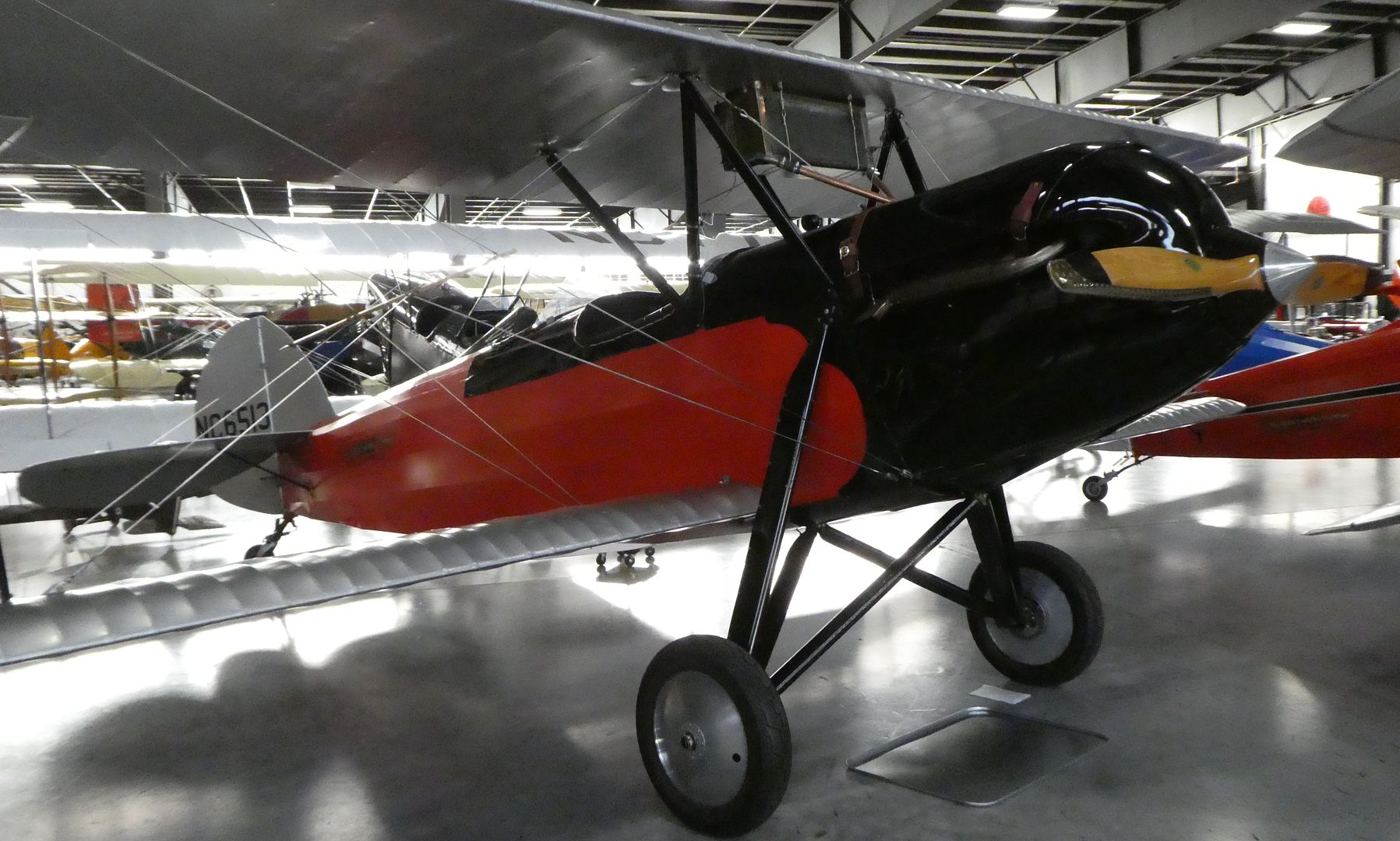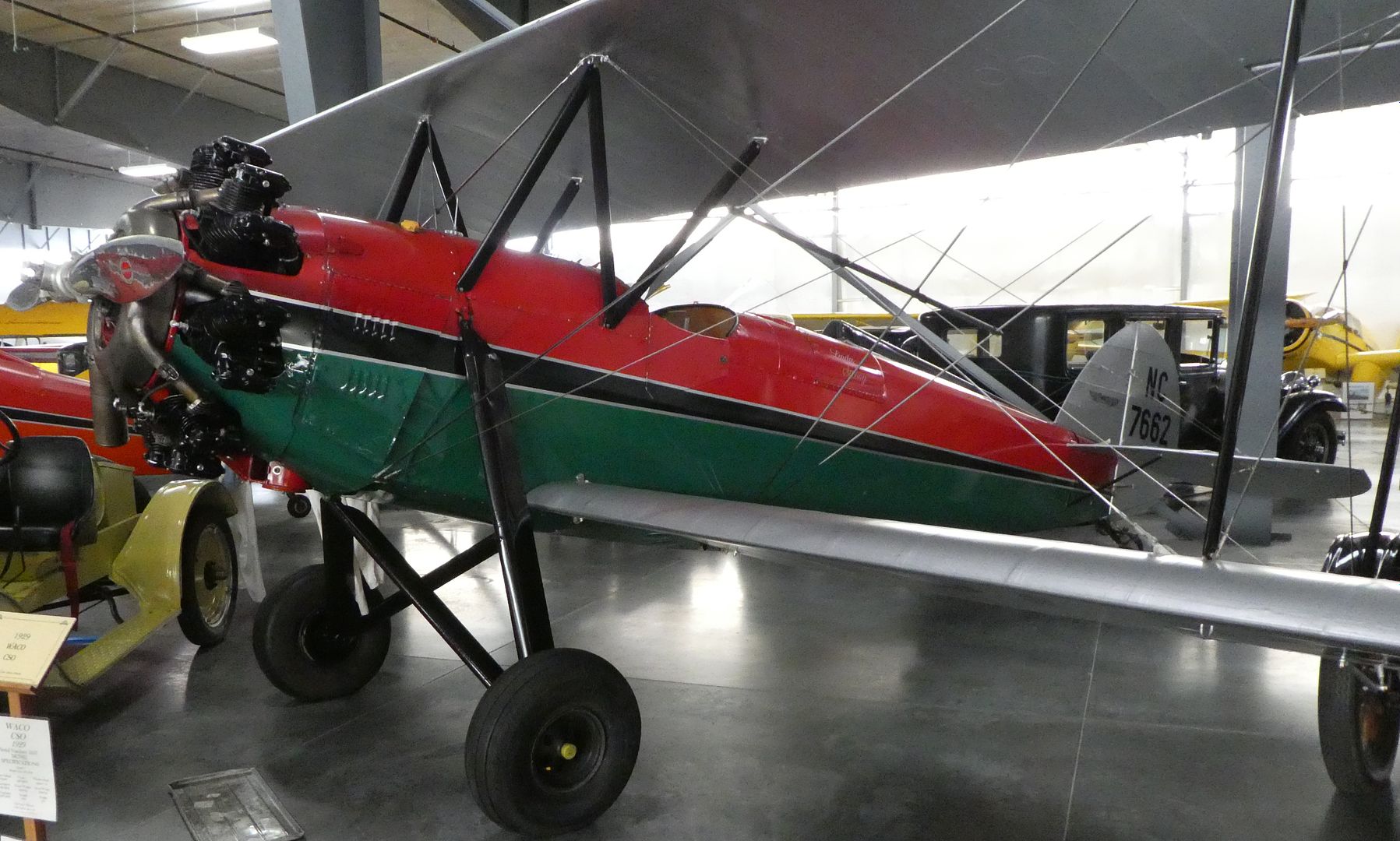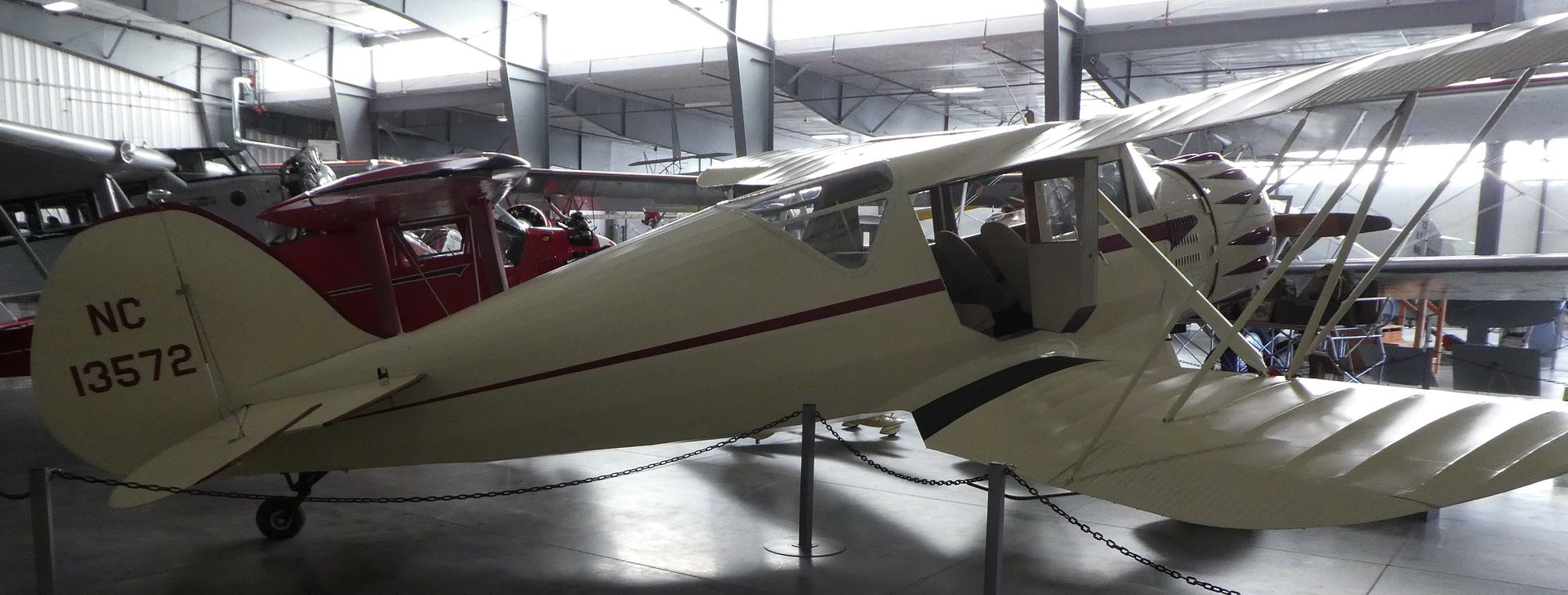The Western Antique Aeroplane and Automobile Museum (WAAAM) in Hood River, Oregon, has on display more than 100 antique airplanes. Shown below are some of the Waco airplanes which are on display. The drip pans under most of the planes indicate that this is a functioning aircraft.
World War I, the first war in which airplanes played a major role, generated a great deal of interest in flying and in developing new aircraft. Following the war, many of the former military pilots turned to barnstorming, a popular form of entertainment in which pilots, perhaps better called “stunt pilots,” would perform tricks with their airplanes. They would often operate out of a farmer’s field (hence the designation “barnstorming”) and also sell airplane rides. Barnstorming generated a great deal of interest in flying and in airplanes. The barnstormers often used surplus World War I aircraft which the government had sold off very cheaply (the Curtiss JN-4, for example, had been purchased new for $5,000 and then sold as surplus for $200).
When barnstorming pilots Charley Meyers and George Weaver met businessmen Clayton J. Brukner and Elwood Junkin in 1919 a new aircraft business was born. The group’s first venture, a floatplane, turned out to be a failure, but this did not stop them. In 1920 they formed the Weaver Aircraft Company in Lorain, Ohio. When Weaver left the company in 1923, they changed the name to the Advance Aircraft Company and moved to Troy, Ohio. In 1928 or 1929, the name was changed to Waco Aircraft Company.
Waco was the first aircraft company to use assembly line production. From 1927 to 1929, Waco led all civilian aircraft production and had sales distributors in 24 different countries.
In the history of American aviation, Waco gained a reputation as the producers of rugged and reliable aircraft. Their planes were popular with business people, postal services, and explorers. In 1930, Waco began producing closed-cabin biplane models.
During World War II, Waco produced military gliders for both the Royal Air Force and the U.S. Army Air Force.
In 1947, Waco ceased operations. Many people had anticipated that there would be a boom in the production of general aviation aircraft following the war, but this boom failed to materialize.
Waco’s last project was the Aristocraft which was powered by an experimental Franklin engine. The Aristocraft, designated as Model W by Waco, was a four-seat monoplane. It had an unusual configuration with an engine mounted in the front which drove a pusher propeller at the rear. Only the prototype was actually built even though the company had orders for 300 aircraft. Waco sold the design rights and there were later efforts to market the plans for home construction.
1925 Waco Nine


1928 Waco Ten



1928 Waco ATO “Taperwing”
The Taperwing was a popular choice of stunt pilots. About 53 of these airplanes were built and sold for $8,525. It is powered by a 440 horsepower Wright Radial.



1929 Waco DSO
This airplane has a 150 horsepower Hispano Suiza Model A engine.


1929 Waco CTO


1929 Waco CSO
This airplane has a cruising speed of 108 MPH and a top speed of 128 MPH. Approximately 17 of these airplanes were built. The engine is a 225 horsepower Wright J-6-7.


1930 Waco INF


1931 Waco RNF
This airplane has a cruising speed of 95 MPH and a top speed of 112 MPH. More than 150 of these airplanes were built. The engine is a 125 horsepower Warner Scarab.


1932 Waco UBA


1932 Waco UBF “The Tourist”
This airplane has a cruising speed of 116 MPH and a top speed of 132 MPH. More than 11 of these airplanes were built. The engine is a 210 horsepower Continental W 670-N. The UBF was a 3-place, open cockpit, all-purpose biplane.


1933 Waco UIC
This airplane has a cruising speed of 115 MPH. A total of 83 of these airplanes were built. The engine is a 220 horsepower Continental W 670. It sold new for $6,000.



1935 Waco YPF
This airplane has a cruising speed of 135 MPH and a top speed of 150 MPH. Only 2 of these airplanes were built. The engine is a 225 horsepower Jacobs L-4.


More Airplane Photo Diaries
Planes of Fame: P-38 Lightning (Photo Diary)
Planes of Fame: Some Jet Fighters (Photo Diary)
Planes of Fame: Some Naval Aircraft (Photo Diary)
Yanks Air Museum: Multiple Engine Aircraft (Photo Diary)
Yanks Air Museum: World War II Bombers (Photo Diary)
Yanks Air Museum: Biplanes (Photo Diary)
Museums 101: 1930s Biplanes (Photo Diary)
Museums 101: Some 1920s Monoplanes (Photo Diary)


